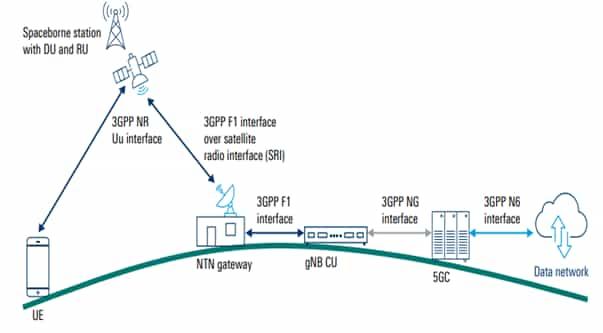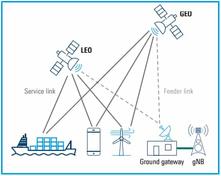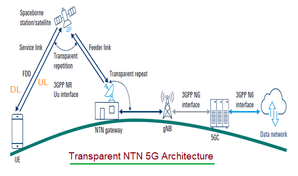Difference between Backhaul vs Feeder Link in 5G NTN
Advertisement
Feeder Link
- It is the radio link between the satellite (or NTN platform) and the ground gateway station (or network control center-NCC).
- It operates usually in higher frequency bands such as Ka-band or Q/V band.
- It is not connected directly with the end users.
- It acts as “trunk line” between space segment and terrestrial network on the Earth.
- It carries aggregated user data, control information, and network signaling between the terrestrial core network and the satellite.
Backhaul Link
- It is the connection between the satellite (or NTN platform) and the terrestrial base station (e.g., gNB or edge node) in 5G networks.
- It helps to connect multiple base stations to the core network (CN) via the satellite when fiber or microwave backhaul is unavailable.

Key differences
| Aspect | Feeder Link | Backhaul Link |
|---|---|---|
| Definition | Link between Satellite & ground gateway station | Link between satellite & terrestrial base station i.e. gNB in 5G |
| Purpose | Connects satellite to the 5G core network (5GC) | Extends 5G RAN connectivity to remote base stations |
| Frequency bands | Higher bands (Ka, Q, v) for large bandwidth requirements | Lower bands (Ku, Ka) depending on coverage requirements |
| Function in network | Acts as a trunk link for network control and aggregated traffic | Acts as a bridge to connect remote base stations to the core |
| Example Use case | Satellite gateway communicating with GEO satellite | Remote village gNB connected via LEO satellite |
Summary: A Feeder Link is an intrinsic part of the primary NTN architecture. NTN Backhaul is a use case where NTN provides connectivity for a separate terrestrial network element.
Advertisement
 RF
RF
